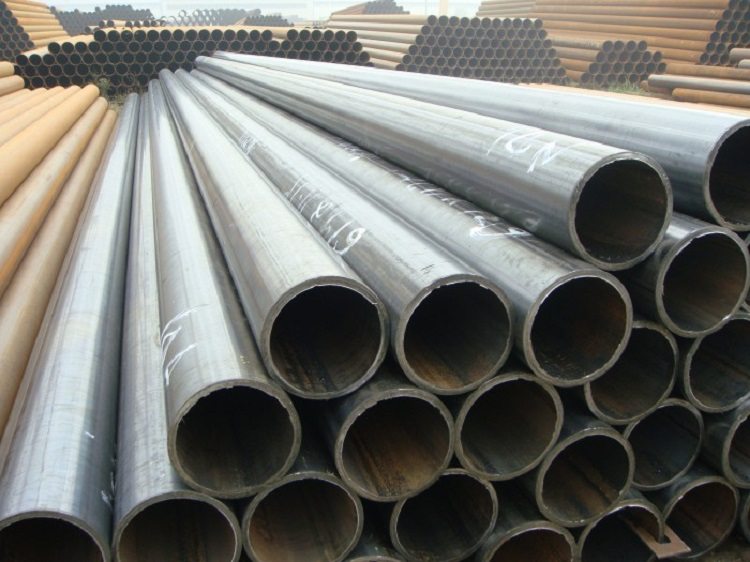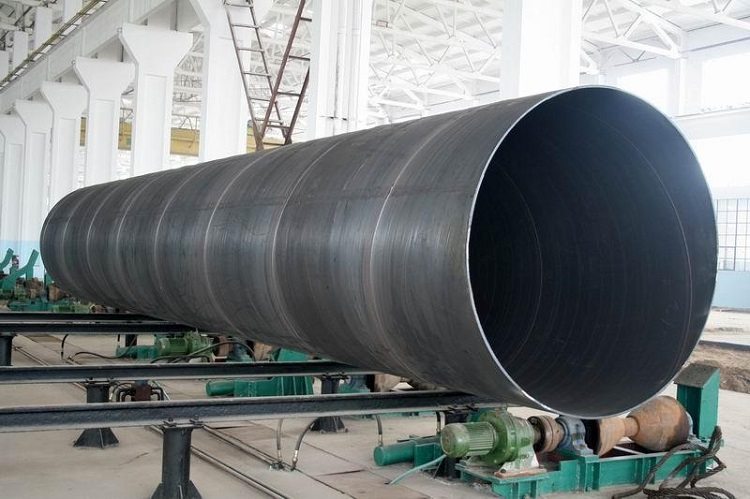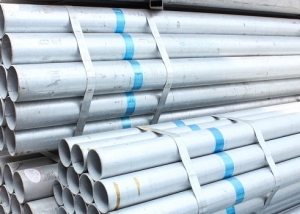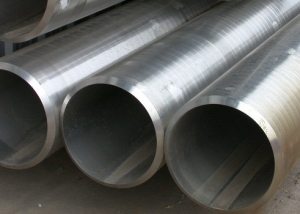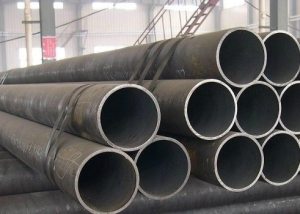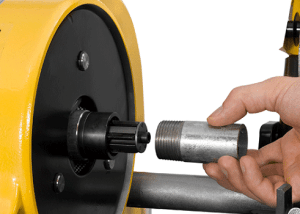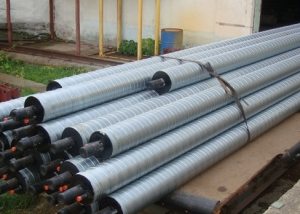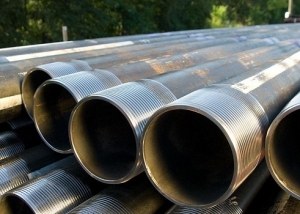Anyone who has at least once encountered repair work on a domestic pipeline knows what a VGP pipe is. Rolled steel used for pressure, pressureless water and gas pipelines is available on the market in a wide assortment, and, obviously, is not going to concede its leading position to plastic pipes. VGP pipes are especially successfully used in areas where the effect of corrosion is minimized: in aboveground areas and indoors. However, galvanized steel products can resist corrosion quite well even in the most adverse conditions.
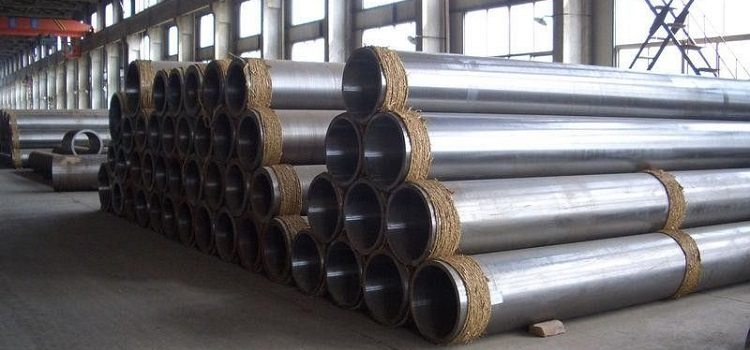
VGP steel pipes are used for installation of gas and water mains with different operating conditions
Content
VGP steel pipe: what is it?
Pipes classified by the abbreviation VGP are considered very durable and wear-resistant. Their rigidity is equal to the qualities of an all-metal bar of a similar diameter. The purpose of the steel VGP pipe is to decipher the name - “gas pipeline". Accordingly, these products are used to create pipelines for gas and water: both domestic (domestic) and trunk.
The advantages that water and gas pipes have are the following:
- low rate of linear expansion. VGP pipes do not deform under the influence of temperatures approaching boiling water. They are able to withstand temperatures at which polymeric materials begin to soften and melt. Also, the steel pipe does not deteriorate when the coolant (liquid) is freezing;
- high strength. The strength characteristics of VGP steel pipes are higher than the data of copper and polypropylene products. Their limit of permissible internal pressure allows the use of steel pipelines in pressure networks. Galvanized VGP pipe is also resistant to corrosion;
- thermal conductivity. Mediums in steel pipes keep the required temperature for a long time;
- tightness. Transportation of gaseous and volatile substances, as well as acids and other chemically active components is allowed.
Important! On the other hand, high thermal conductivity can cause heat loss in the system, but this drawback can be easily dealt with by means of insulating materials.
What is the difference between a VGP pipe and an electric-welded pipe?
Of course, this question is not entirely correct, but for a layman is quite important. In general, VGP pipe is a variation of the category of electric-welded products. Visually, a gas and water pipe differs from an electric-welded one only in size, but the state standard dictates different requirements for these two types of pipes. Electric-welded pipes are more often used in trunk structures, and can also serve as supporting posts, frame structures for furniture, fences or fences. As for the production of VGP, galvanized steel can be used in the manufacture of electric-welded pipes.
The main differences between these types of pipes, according to the relevant GOSTs, are presented in the table.
Table 1
| Steel VGP pipe: GOST 3262-75 |
Straight-seam steel electric-welded pipe: GOST 10704-91 (TU according to GOST 10705-80) |
| Normative document dictates the conditions for the assortment and production of VGP pipes with a conditional pass from DN 6 to DN 150 |
Normative document dictates the conditions for the production and assortment of longitudinally welded pipes with an outer diameter of 10-1420 mm |
| Tolerances (considered by outer diameter): Not more than 0.4 mm for d <48 mm Not more than 0.8% for d> 48mm |
Maximum permissible deviations (considered by the outer diameter):
Not more than 0.4 mm for d <50 mm |
| Maximum allowable deviation for wall thickness: 15% | Maximum permissible deviation in wall thickness: 10% |
| Maximum hydraulic pressure:
2.4 MPa - conventional pipes |
Maximum hydraulic pressure:
6 MPa - at d <102 mm d> 102 |
Production of analogues of steel VGP pipes is allowed according to GOST 10704-91, provided that they fully comply with the standards presented.
VGP pipe: characteristics and assortment
The range of VGP pipes by type of product is divided into two types: VGP pipe black and galvanized. The assortment relates galvanized models to a series of pipes of increased accuracy. Further classification is made according to product lengths, wall thicknesses, outer diameter and remote control (decoding - specific or conditional passage).
The last indicator - remote control - indicates the bandwidth of the selected product. The range includes pipes with nominal bore in the range of 6-150. Under different conditions, the outer diameter ranges from 10 mm (for DN 6) to 165 mm (for DN 150).
Conditional pass is usually denoted in inches. The VGP pipe, whose remote control is set to “20”, will be recorded in catalogs as a product with an internal diameter of ¾ inch. And all additional materials (fittings, couplings, plugs, etc.) will also be required with a value of ¾ inch.
Translation in inches of other remote controls:
- Pipe VGP DU 8 = ¼ ”;
- DN 15 = ½ ”;
- DN 25 = 1 ”;
- DN 32 = 1¼ ”;
- DN 40 = 1.5 ”;
- DN 50 = 2 ”, etc.
The rigidity of the VGP pipe is affected by another indicator that determines the product range - wall thickness. It proceeds from how thick the steel sheet was, from which the pipe was subsequently welded. The ratio of the conditional passage to the outer diameter of the VGP of the product also depends on the wall thickness.
The range includes such types of pipes by wall thickness:
- ordinary - wall thicknesses vary from 2 to 4.5 millimeters;
- lungs - from 1.8 to 4 millimeters;
- reinforced - from 2.5 to 5.5 millimeters.
The only difference that distinguishes galvanized VGP pipes from simple products in the production of which black steel is used is their weight. Galvanized pipes have a 3-5% greater mass due to the presence of a thin anti-corrosion coating. In all other respects, the GVP assortment of pipes extends to galvanized models.
Certificate for VGP pipe: what is it and why is it needed?
A certificate issued by the manufacturer is needed to protect the consumer from the purchase of low-quality goods. The presence of a certificate of conformity indicates that this manufacturer adheres to all the norms prescribed in a specific GOST. It is interesting that the certificate of conformity for VGP pipes is issued on a voluntary basis: water and gas products are not subject to mandatory certification. Such a certificate is issued after passing tests in laboratory conditions, including hydraulic ones.
Important! If the certificate is issued for galvanized products, the document must indicate the method of galvanizing - “hot” or “cold”.
Another document that has a positive effect on customer confidence is a hygiene certificate. The conclusion on the passage of the sanitary-epidemiological examination fits into it. The procedure is carried out in a limited time using standard expert techniques. The certificate obtained by the company applies to the entire range of products.
At the choice of pipes for the installation of the gas pipeline system (water supply) must be based on the degree to which the supplier’s capacities comply with the state standard and on personal requirements. For domestic pipelines, it is advisable to use galvanized pipes and black steel pipes. If the requirements for the operation of the system are increased, then galvanized steel will be the best choice.
